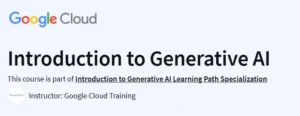Using Python for Reading and Writing Optical Labels
A focused, hands-on Python course that teaches you to reliably read, write, and deploy optical label solutions for real-world automation tasks.
What will you learn in Using Python for Reading and Writing Optical Labels Course
Use Python libraries to read and decode barcodes, QR codes, and other optical labels.
Preprocess images for reliable label recognition using OpenCV and Pillow.
Implement OCR techniques with Tesseract to extract text from labels.
Generate and render custom barcode and QR code images programmatically.
Validate and format decoded data for inventory, logistics, and asset tracking.
Integrate label reading and writing into end-to-end Python applications.
Program Overview
Module 1: Introduction to Optical Labels
⏳ 1 hour
Topics: Overview of optical labels, use cases in industry, Python environment setup.
Hands-on: Install and configure Pillow, OpenCV, pyzbar, and pytesseract libraries.
Module 2: Image Preprocessing for Label Reading
⏳ 1.5 hours
Topics: Grayscale conversion, thresholding, noise reduction, and contour detection.
Hands-on: Preprocess sample images to optimize barcode and QR code detection.
Module 3: Reading Barcodes and QR Codes
⏳ 2 hours
Topics: Using pyzbar and OpenCV to detect and decode various barcode symbologies.
Hands-on: Build a script that scans images or camera input for barcodes/QR codes.
Module 4: Optical Character Recognition (OCR) for Labels
⏳ 2 hours
Topics: Tesseract OCR integration, language packs, custom configurations.
Hands-on: Extract and clean text from complex label images using pytesseract.
Module 5: Writing and Generating Labels
⏳ 1.5 hours
Topics: Generating barcodes and QR codes with python-barcode and qrcode libraries; image composition.
Hands-on: Create scripts to produce print-ready label images with embedded text and codes.
Module 6: Data Validation & Error Handling
⏳ 1 hour
Topics: Verifying scanned data formats, handling misreads, and implementing retries.
Hands-on: Develop validation routines and a simple GUI prompt for re-scanning failures.
Get certificate
Job Outlook
Skills in optical label processing are in demand for roles in logistics automation, retail inventory management, and manufacturing.
Python developers with image-processing and OCR expertise can command salaries from $75K–$110K (USD).
Opportunities span startups to large enterprises deploying barcode-based tracking and quality-control systems.
Proficiency in end-to-end label workflows boosts prospects in automation engineering, data capture, and IoT integrations.
- Covers both barcode/QR code decoding and generation
- Strong focus on image preprocessing for reliability
- Includes OCR integration for mixed text-code labels
- Assumes familiarity with Python—but no deep prerequisites
- Limited exploration of advanced deep-learning OCR models
Specification: Using Python for Reading and Writing Optical Labels
|





